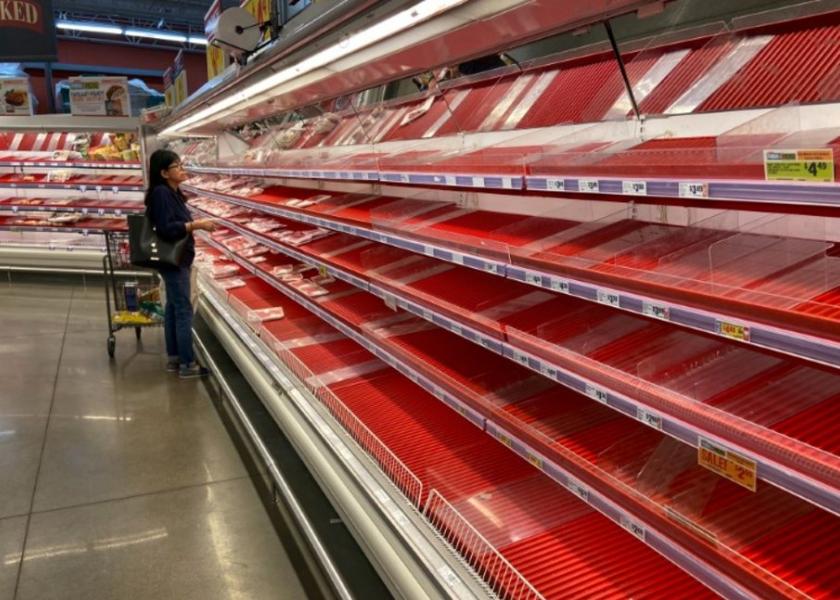Derrell Peel: Grocery Disruptions Amid Beef Processing Chaos

COVID-19 continues to sweep through packing plant workers leading to severe disruptions in beef processing. Estimated cattle slaughter for the week ending May 2 was 425,000 head, down 38 percent year-over-year. Total cattle slaughter has averaged 26.4 percent lower than last year over the past four weeks, a decrease of 689,000 head and a little more than one week of cattle slaughter at this time of year. The backlog of slaughter cattle is growing rapidly.
Corresponding to slaughter decreases, beef production was down over 35 percent year-over-year last week, with average weekly beef production the past four weeks down 25 percent from the same period last year. Over the last four weeks, total beef production was down 520 million pounds year-over-year. For the first 14 weeks of the year, before the current reductions started, average weekly beef production was 525 million pounds. This means that one of the last four weeks of beef production has been lost due to decreased beef packing capacity.
Grocery consumers first noticed beef supply disruptions in March when the shutdown of food service shifted beef demand largely onto the retail grocery side. The resulting supply chain bottlenecks and surge in grocery demand resulted in temporary shortages in grocery supply.
The supply chain bottlenecks continue, though with some time we have seen limited ability to shift some product from food service to retail. In some cases, retail label and packaging requirements have been exempted temporarily and consumers can find food service packages, often in bulk quantities, available at retail grocery.
Consumers may not notice or understand the difference, but the continuing disruptions in beef availability in May are the result of the current decreases in beef production in additional to the continuing supply chain restrictions. The situation may become more acute as food service demand rebuilds when restaurants reopen.
While the current shortages are real, it should be emphasized that they are temporary and do not imply an overall lack of beef supply in the country. The annual forecast of beef production for 2020 has not been reduced from the expectation of a record level of 27.9 billion pounds. The current situation simply means a change in the timing of that production over a few weeks.
Given when packing plant workers began to be impacted and the additional attention now focused on protecting worker health, it is likely that we are currently at or very near the worst point of packing plant disruptions.
However, it is unclear how fast plants will resume production levels in the coming weeks. It is likely that the effective capacity will be reduced permanently or certainly for the foreseeable future because of the safety changes needed at packing plants. The impacts on cattle markets will linger for many weeks before backlogs are cleaned up and markets are current again.







